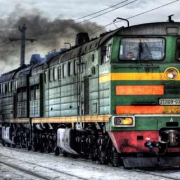LNG pricing – the enemy within (and the one at the door)
I am just getting out of the thick of the Central European Gas Conference – which was mighty well organized—the LNG focus day reinforced everything I have said for years and which was also on the horizon for even the blind to see for months.
We are facing a huge tsunami of fresh LNG and much of it has nowhere to go in a contracting marketplace. But as Andrew Williamson, a participant in one of yesterday’s discussion rounds has validly put out, numbers can be deceiving. Not all import capacity is created equal.
Most people bring their gut reactions from the oil world when they think of LNG and that’s a fallacy. Compared to LNG, oil is a super liquid market with ample overcapacity on all parts of the supply chain, countless suppliers on all rungs of the ladder, countless consumption points on all rungs of the ladder and it’s a generalized business that affects all parts of the globe from downtown Manhattan to the Falkland Islands.
LNG, in contrast, is still some fly on the wall that is done by the weird and functions – at least in public perception – just like oil does, only colder. We LNG folks know that this is rubbish as LNG has its dynamics and they are as different from oil as massage parlors are from candy shops. Both give some pleasure but could not be more different otherwise.
Let’s skip all the chatter on LNG becoming a commodity for a second. It’s an extremely interesting discussion in its own right but it bears little relevance to our main topic here.
The current torrent of cryo liquid is just rolling into high gear.
Australia swamps Asia with around 70 mtpa of fresh supplies which will put a plug into all possible available markets in this part of the world. Aussies are geographically closer to those markets than the Atlantic producers so they can afford to undercut them. Their only impediment is the relatively high cost they have logged in when building those plants but now they stand and must produce – come what may.
This means that they will eventually squeeze out all opportunities for producers west of Qatar to place volumes.
Let’s not forget that most LNG suppliers that have traditionally delivered into the US markets (ready or planned at the time) have switched to Asia at the time as it sucked up anything that came out of the plants at exorbitant prices.
This giant sucking sound also was the commercial rationale for many of the new plants. As it has disappeared, they are all in distress as they have not prepared for a world with lower prices.
Anyhow, produce they must as they cannot simply switch their plants off as this would mean forgone revenue and another grain of sand on the balance towards forced impairment which all of them must shun more than the devil shuns being baptized.
So they will keep the wagon rolling at all costs, even if hell freezes over.
Back to the market. I have just said that as the Asian market is going to be stacked solid by Kanga LNG, all the old ex-US-bound LNG comes back into the Atlantic with no place to go. No producer west of Qatar is going to place any LNG in Asia anymore over the next couple of years.
But to add insult to injury, there is plenty of new US LNG entering the market at the same time. Most of it will come around 2018. This means that the backlash from Asia is joined by a flood of fresh, uncommitted LNG.
They can go to South America but this tiny consuming region cannot swallow enough to put a meaningful dent into the market. Remains just – Europe.
Let’s do the scan. Essentially you have Mediterranean terminals, Atlantic Spain and France, the UK, North Western Europe, and the new Baltic coast players.
Only the UK and North Western Europe have big terminals backed up by big hubs and grids and storage and functioning trading regimes to swallow big volumes on short notice. It’s going to drive prices down but it’s not going to kill the market.
All the others are little physical terminals that are custom-built for their situation, their town, their industry, and their country. Like South American terminals, they are flexibility takers and not flexibility givers so they will also not have a noticeable effect on the volumes.
This makes North-Western Europe and the UK the market sink for overflow volumes of LNG for the world and we are facing the largest overflow of LNG in human history.
That’s an exciting position to be in for holders of terminal rights in this region.
But to sink their volumes, they will have to be price competitive with European pipeline gas which means they will have to undercut everyone else which is mainly Russians and Norwegians in this part of the world.
And as there is not enough regasification capacity for all the LNG coming, they will also have to bite each other on the way to salvation.
This means that the most brutal of all price fights will happen both among LNG players and pipeline players and also among the LNG players themselves. Not because they want to but for mere survival.
Exciting times for those with a steady heartbeat. All others are advised to stock up on sleeping pills, heart drugs, and tranquilizers as this is not going to be for the faint of heart.
But what an opportunity.


















Great Article. The unknown about the US will be its ability to swing production. Most LNG trains are limited in their ability to turn up and down as a result of the “self cooling” process, but I have been assured that the limits on production have been governed in the past by maintaining pressure in the slug catchers (not present in US?). I would be interested to hear if anyone from an engineering background can give any insight
Ed, I know that this is one of the big discussions around but what I can glean from most operators I meet is that there is no wish to ever switch off. They will simply treat everything as sunk cost as long as it takes for them to make the deal worthwhile. I can see switch off’s for technical reasons but not for commercial ones even if they make sense on the face of things. But I am not an engineer.
A friend and LNG engineer of mine told me that switching off is a rats nest as the danger of breaking something because of thermal stress is way too big for quick commercial gambling.